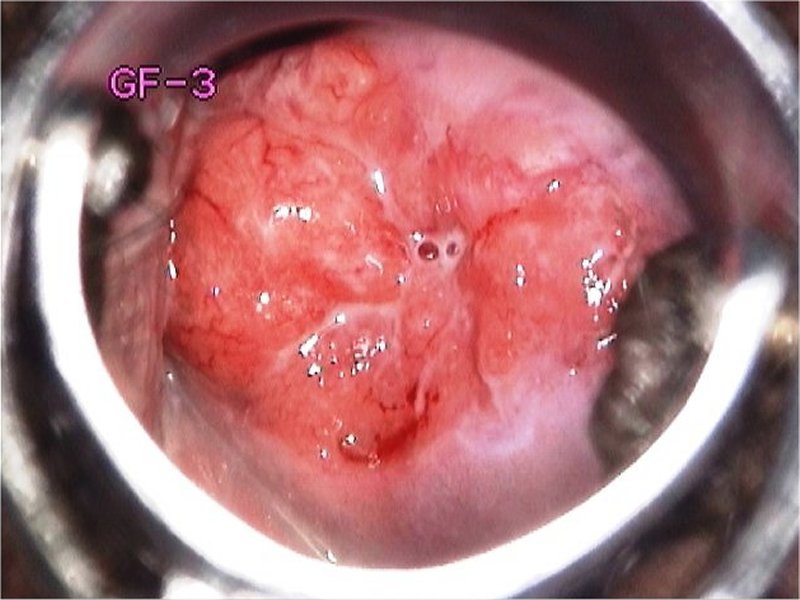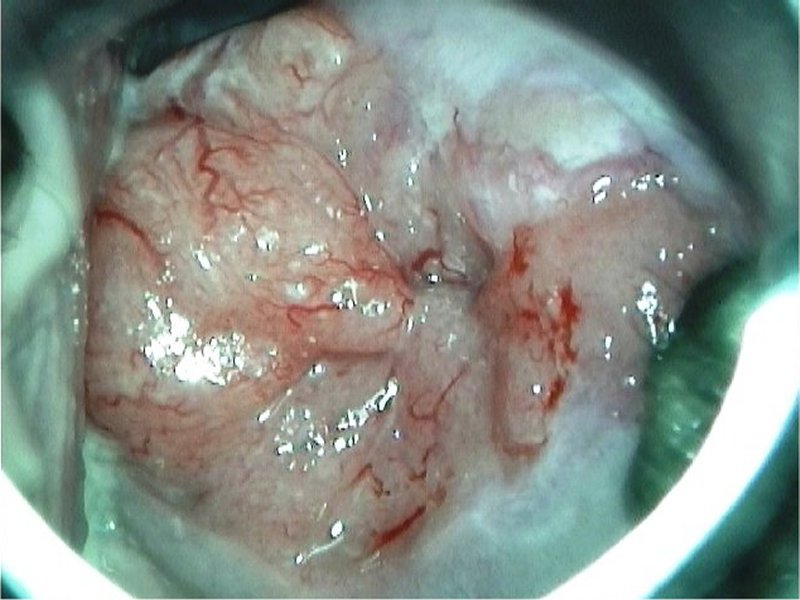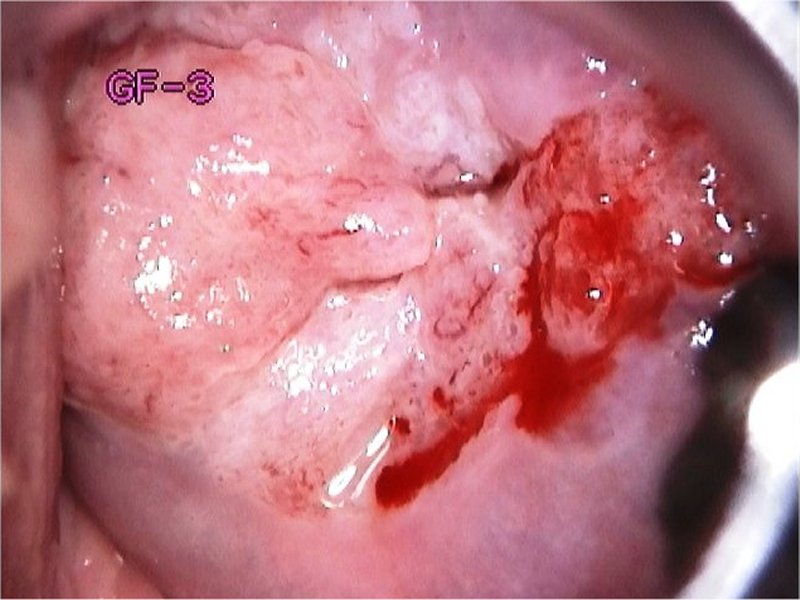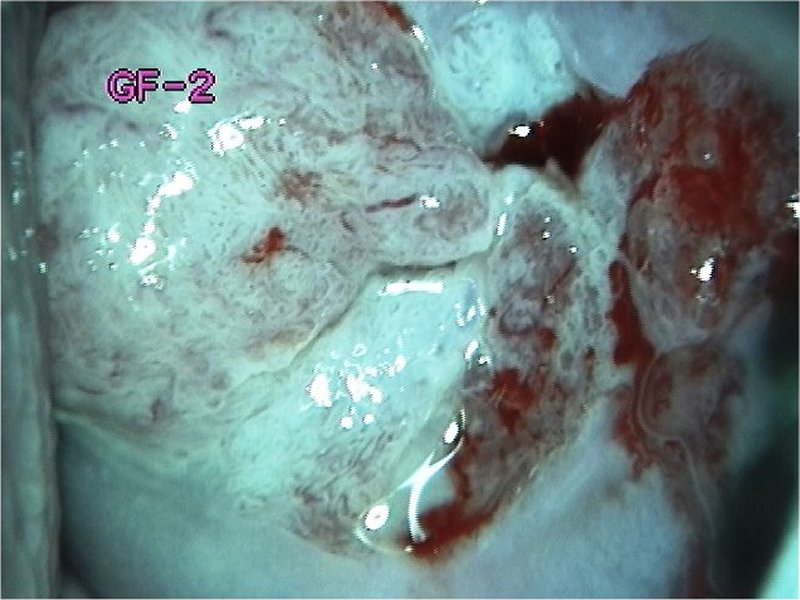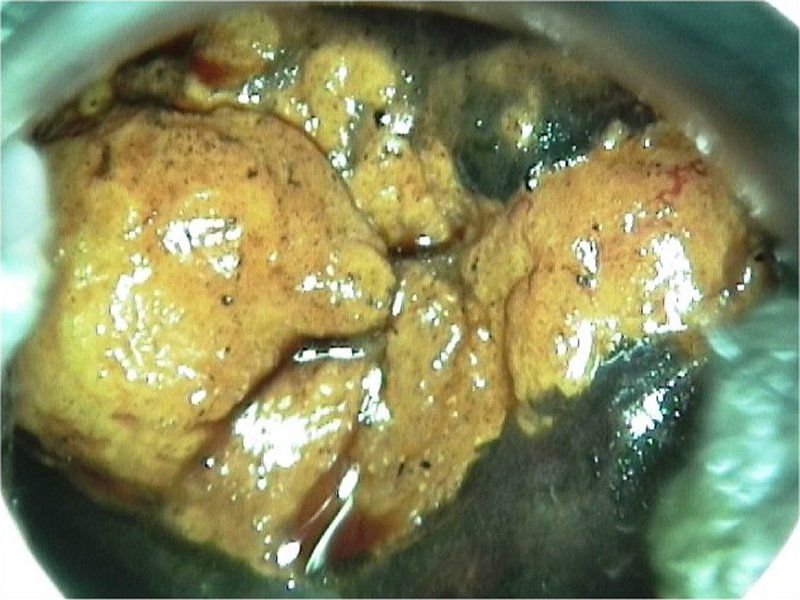Atlas of Colposcopy: Principles and Practice / Activity 6
Case |
Early and advanced cancers / Adenocarcinoma
Go back to the list
| After normal saline |
| After normal saline with green filter |
| After acetic acid |
| After acetic acid with green filter |
| After Lugol’s iodine |
 General assessment General assessment | |||||||||||||||||
 Normal colposcopic findings Normal colposcopic findings | |||||||||||||||||
 Abnormal colposcopic findings Abnormal colposcopic findings | |||||||||||||||||
 General principles General principles | |||||||||||||||||
 Position and size Position and size | |||||||||||||||||
 Grade 1 (minor) Grade 1 (minor)
|  Grade 2 (major) Grade 2 (major)
|  Non-specific Non-specific
|  Suspicious for invasion Suspicious for invasion
|  Miscellaneous finding Miscellaneous finding
| |
Swede score:
| Nil or transparent | Thin, milky | Distinct, stearin | |
| Nil or diffuse | Sharp but irregular, jagged, satellites | Sharp and even, difference in level | |
| Fine, regular | Absent | Coarse or atypical vessels | |
| < 5 mm | 5-15 mm or 2 quadrants | >15 mm, 3-4 quadrants, or endocervically undefined | |
| Brown | Faintly or patchy yellow | Distinctly yellow |
Case Summary
| Provisional diagnosis: | Suspicion of invasive cancer, probably adenocarcinoma. |
| Management: | Multiple punch biopsies. |
| Histopathology: | Adenocarcinoma. |
| Comment: | Dense acetowhite areas with atypical vessels and irregular surface are visible on the columnar epithelium. However, it is often difficult to identify the columnar epithelium in adenocarcinoma because the epithelium loses its usual characteristics due to the underlying growths. |
